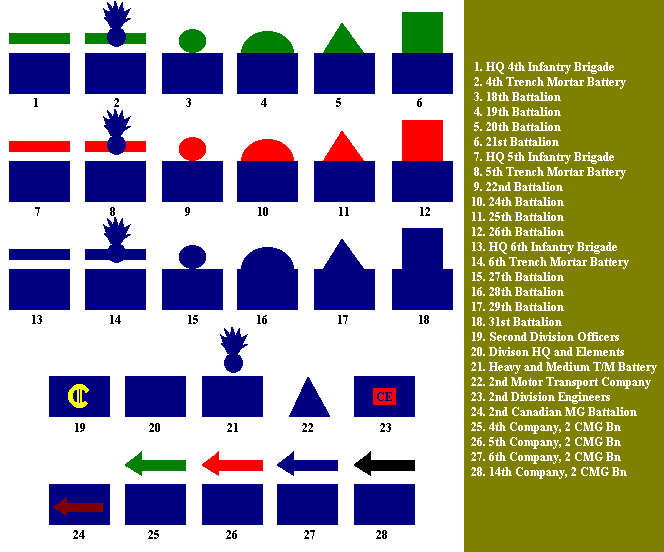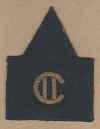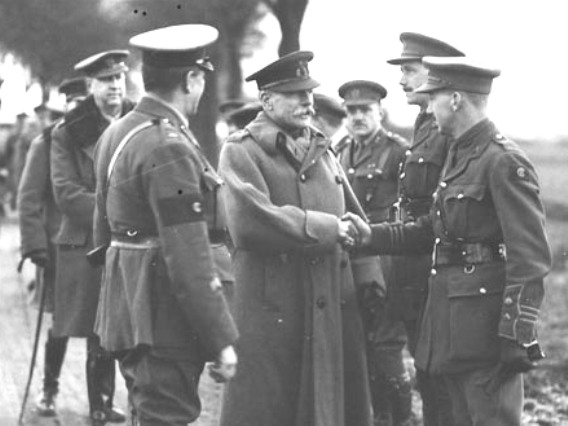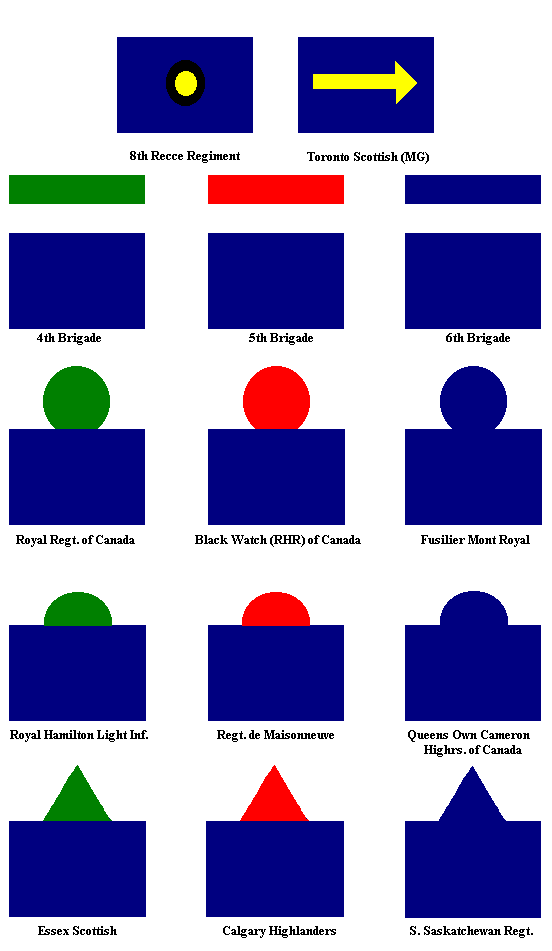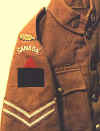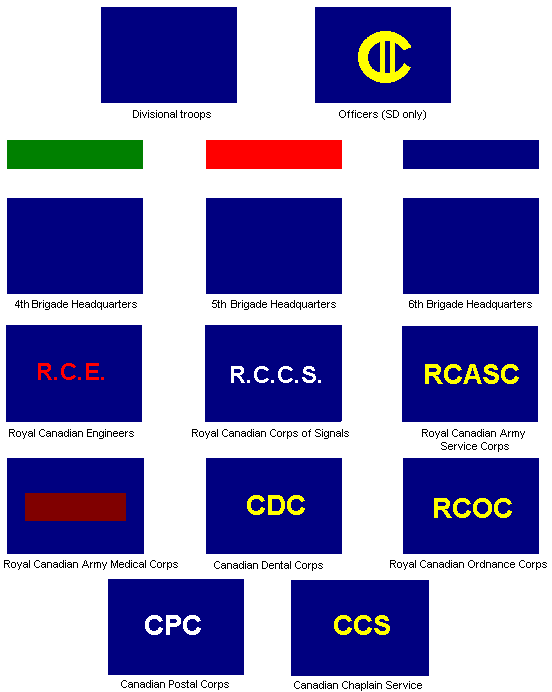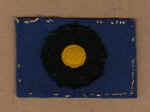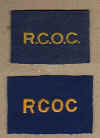|
|
|
|
|
|
Battle patches were originally adopted in the summer of 1916 in time for Canadian participation in the Battle of the Somme. The patches were created as an aid to command and control of fighting troops in the battle line and extended later to other elements of the division. Originally placed on the back of tunics, just below the collar, the patches were quickly moved to uniform sleeves. The division was represented by a blue rectangle 3 inches wide by 2 inches tall, while individual units were further designated by coloured geometric shapes worn in conjunction with the divisional patch.1
Second World War The 2nd Canadian Division in the Second World War readopted the divisional battle patch system that had been worn in the First World War.2 They were also the only division to adopt battalion insignia of the same type adopted in 1916. Formation patches were made from three materials mainly (canvas, felt and wool) and were first issued in about 1941. Officers at Brigade Headquarters of the 2nd Division wore coloured strips half an inch wide by three inches long above the Division patch. The 7th Brigade was designated by green, the 8th by red and the 9th by blue. This system of designating Brigade staff officers was also a re-adoption of Great War practice. Individual infantry battalions were designated by geometric shapes atop the division patch, with the colour of the shape designating the brigade and the shape indicating the seniority within the brigade. The machine gun battalion adopted an arrow on the divisional patch (always facing to the front) that was similar to patches worn in the First World War, and the reconnaissance regiment wore a circle, sometimes on the patch itself, sometimes surmounting the patch, and in some cases in lieu of the patch entirely. After the Dieppe Raid, the geometric shapes were dispensed with, and all infantry units, as well as the machine gun battalion and the reconnaissance unit, adopted standard embroidered unit shoulder titles, conforming to the practice of similar units in the rest of the overseas army.3
Officers were permitted to wear a gold wire C-II device on the divisional patch, in Service Dress only. Members of various corps serving in support units came to wear Divisional patches with letters in the middle, such as RCE (Royal Canadian Engineers), RCASC (Royal Canadian Army Service Corps), RCOC (Royal Canadian Ordnance Corps), RCCS (Royal Canadian Corps of Signals), CDC (Canadian Dental Corps), CPC (Canadian Postal Corps) and CCS (Canadian Chaplain Service). A formation patch with a maroon coloured strip in the middle was worn by some members of the Royal Canadian Army Medical Corps (RCAMC) serving with the Division. The supporting arms also eventually moved away from the distinctive unit insignia on the formation patch, adopting their own shoulder titles worn in conjunction with the "plain" division patch. Both styles of unit/formation identification were in use by the end of the war.
Notes
|
||||||||||||||||||||||||||
© canadiansoldiers.com 1999-present
 2nd Canadian
Division Formation Insignia
2nd Canadian
Division Formation Insignia